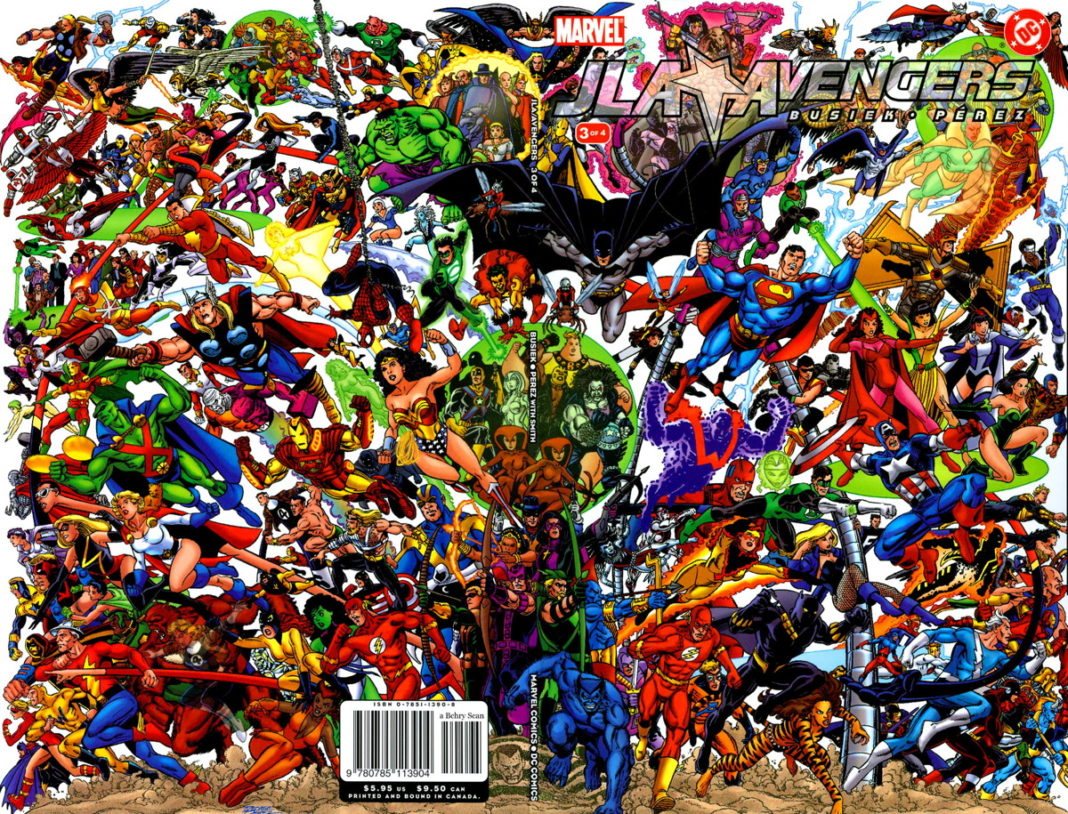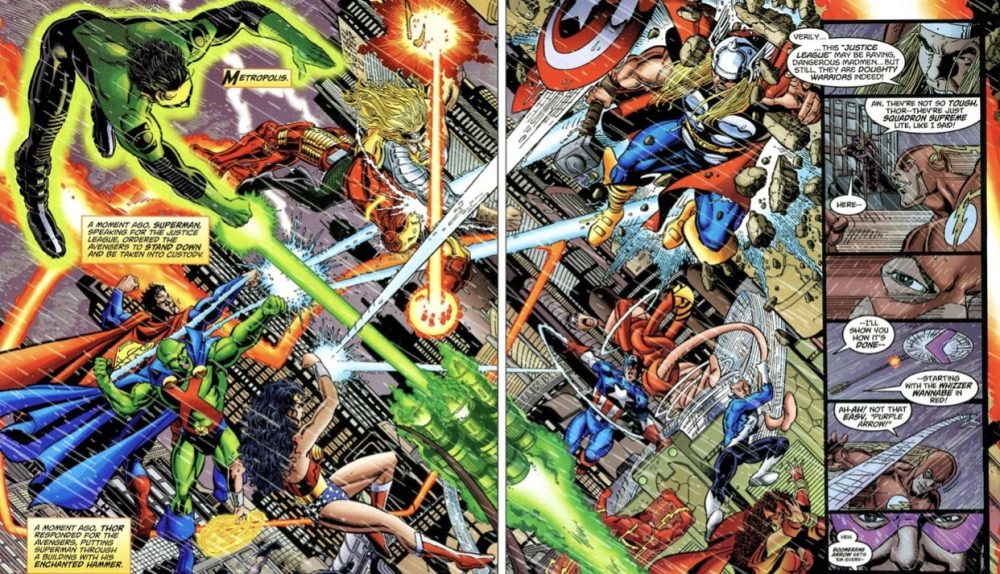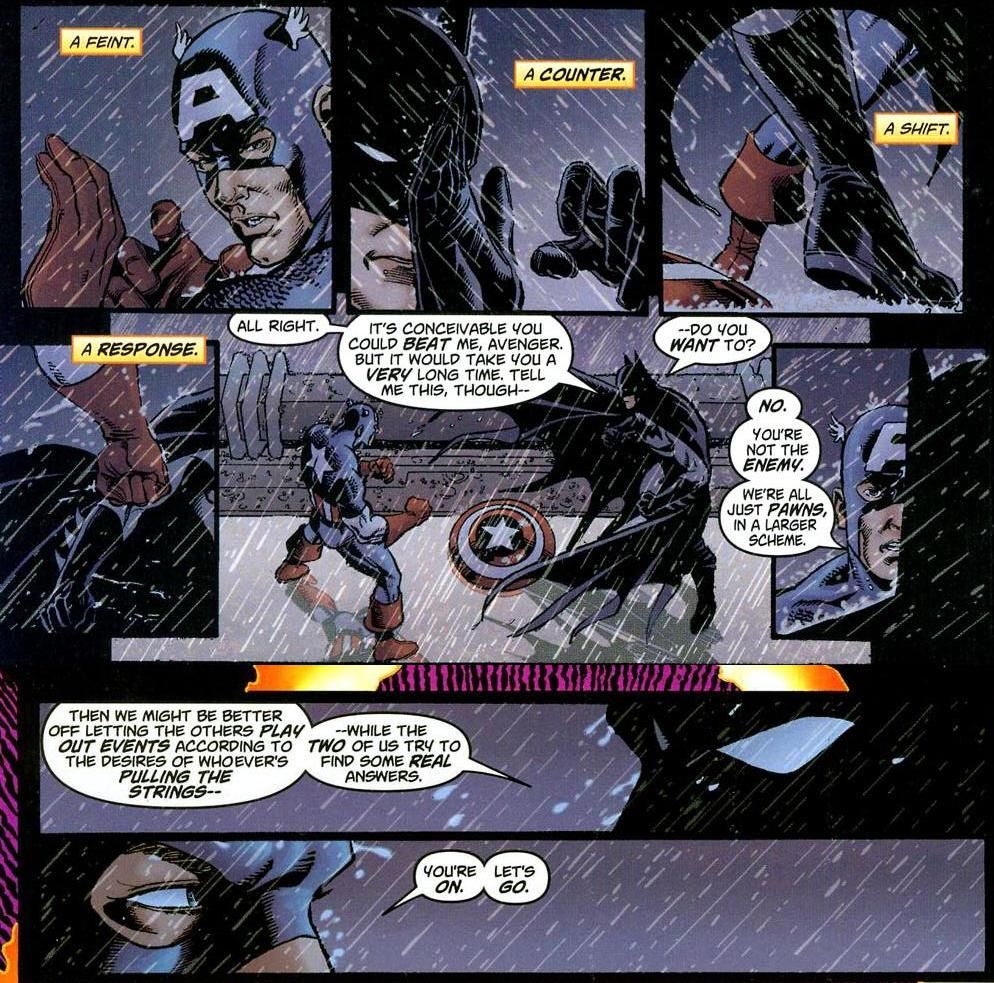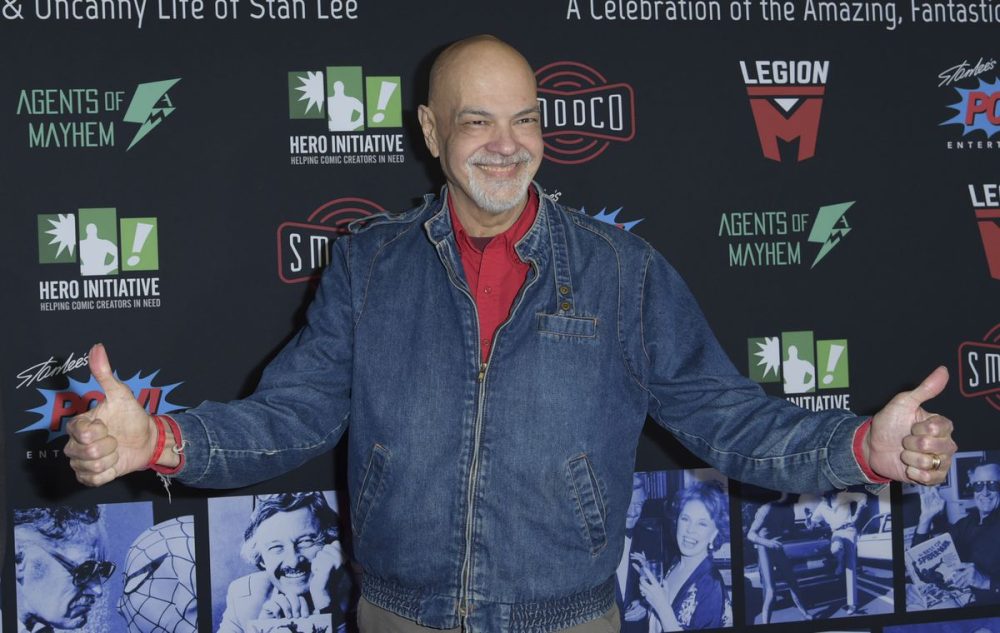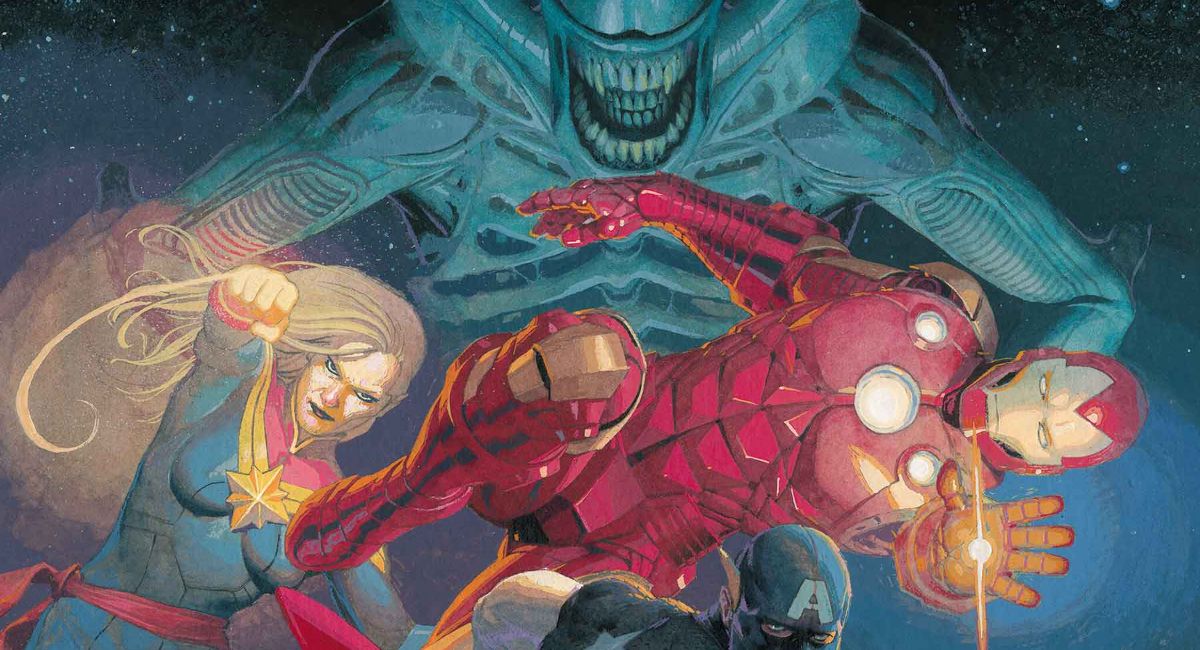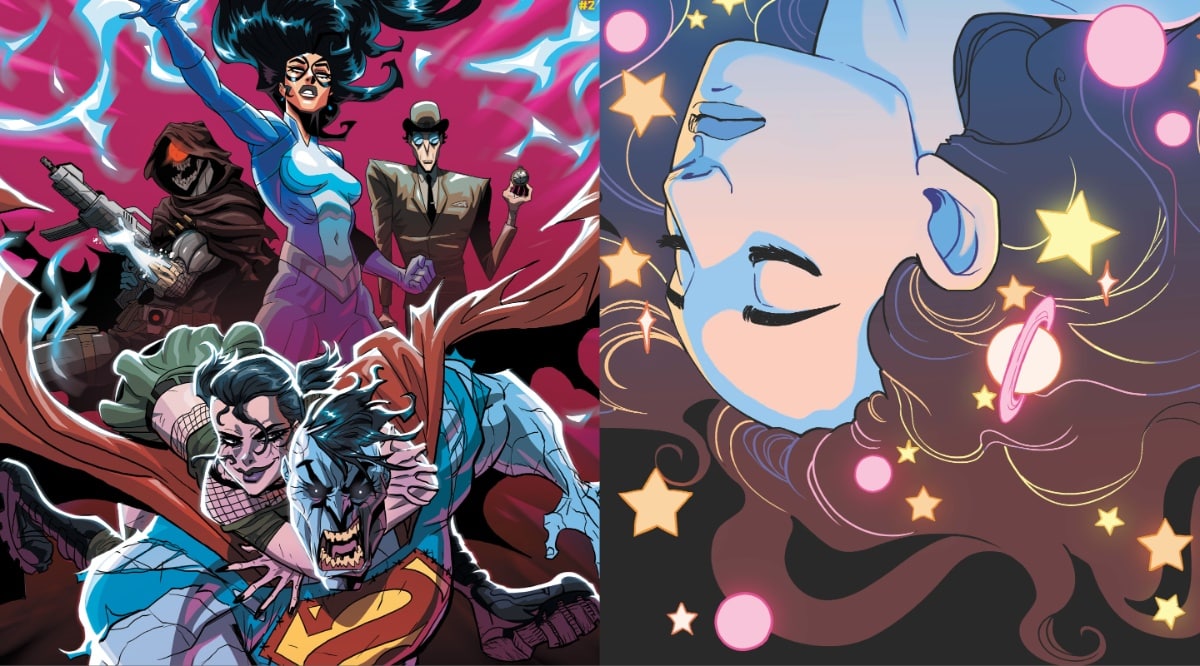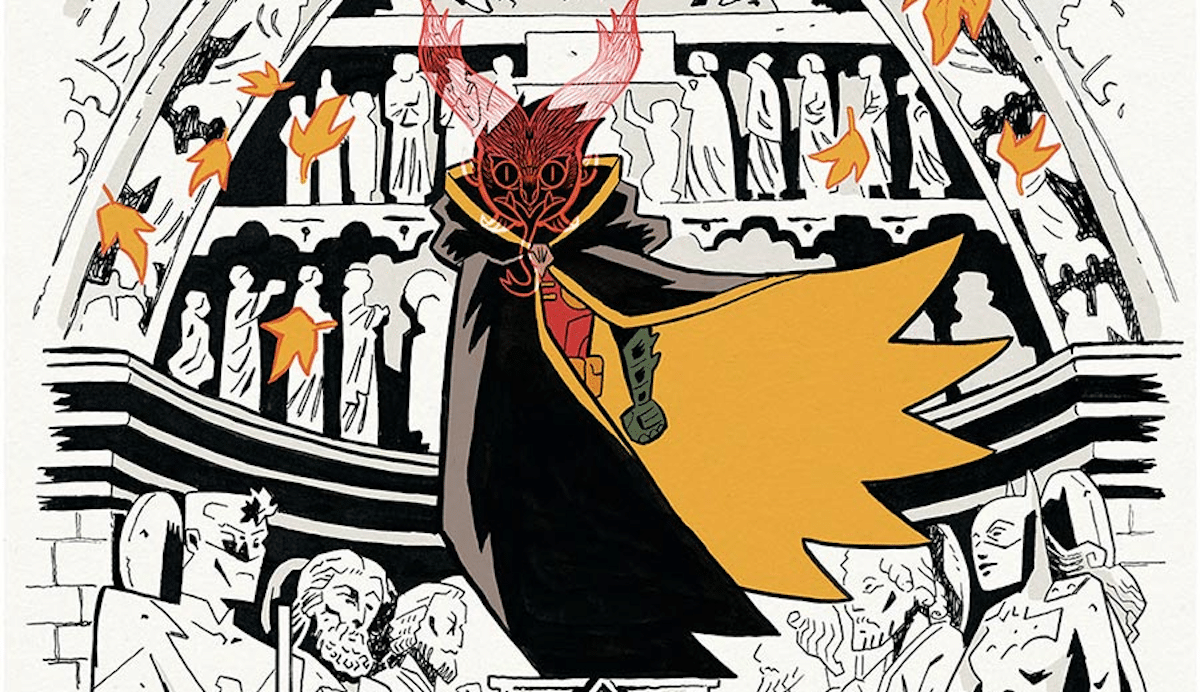The Beat’s Gregory Paul Silber has been accused of having a bit of an… obsessive personality. Each week in Silber Linings, he takes a humorous look at the weirdest, funniest, and most obscure bits of comics and pop culture that he can’t get out of his head.
Like many folks who read as many comics as I do, I make a habit of giving them away en masse to make more space in my little Brooklyn apartment. It makes me happy to know they’re going to a good home, whether I’m giving them to my younger comic-book-curious cousins, or donating them to places like hospitals, my mother’s students, or incarcerated people via NYC Books Through Bars. But there are exactly two comics which I deeply regret giving away.
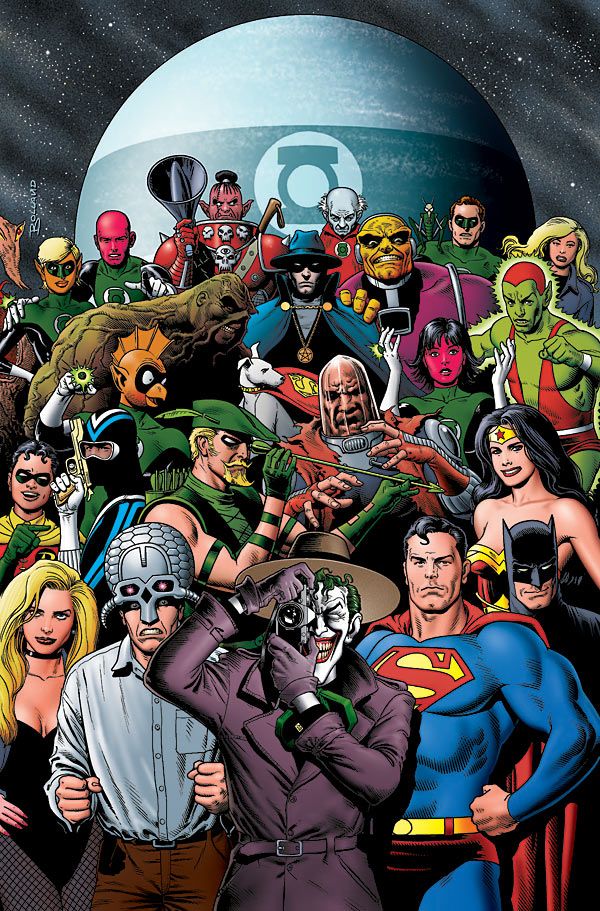
The first is the DC Universe: The Stories of Alan Moore anthology, lost in a breakup. I’m not talking about the newer edition which includes Alan Moore‘s contributions to the Wildstorm universe, which has since been retroactively folded into the broader DCU. I’m talking about the out-of-print version which features Moore’s Superman stories, as well as Batman: The Killing Joke, as DC now redistributed them into two separate, smaller collections for Moore’s Batman and Superman stories. “Whatever Happened to the Man of Tomorrow?” and “For the Man Who Has Everything” are the Superman stories that made me a Superman fan, and while The Killing Joke hasn’t aged well, I vastly prefer the original, psychedelic colors to Brian Bolland‘s slick recoloring in the newer printings. And overall, I miss having all these stories in one book alongside Moore’s lesser-known DC gems like “Mogo Doesn’t Socialize.” So if anyone wants to get me a belated Chanukah gift, or maybe an early birthday present…
My second great regret when it comes to comic books I let go of is JLA/Avengers, by writer Kurt Busiek, artist George Pérez, colorist Tom Smith, and letterer Richard Starkings. Before giving it to my mom to give to her middle school students, I bought it in college at my then-local comic book store, literally called The Comic Book Store, from the same shelf for used, half-priced books where I bought several comics that would soon become favorites: Grant Morrison and Howard Porter‘s first volume of JLA, Batman: The Long Halloween, Captain America: Man Out of Time, The Punisher: Welcome Back Frank, Morrison and Chas Truog‘s Animal Man (have I mentioned before that I’m a huge Morrison fan?), and even that same Alan Moore DC collection I was just talking about… among many others.
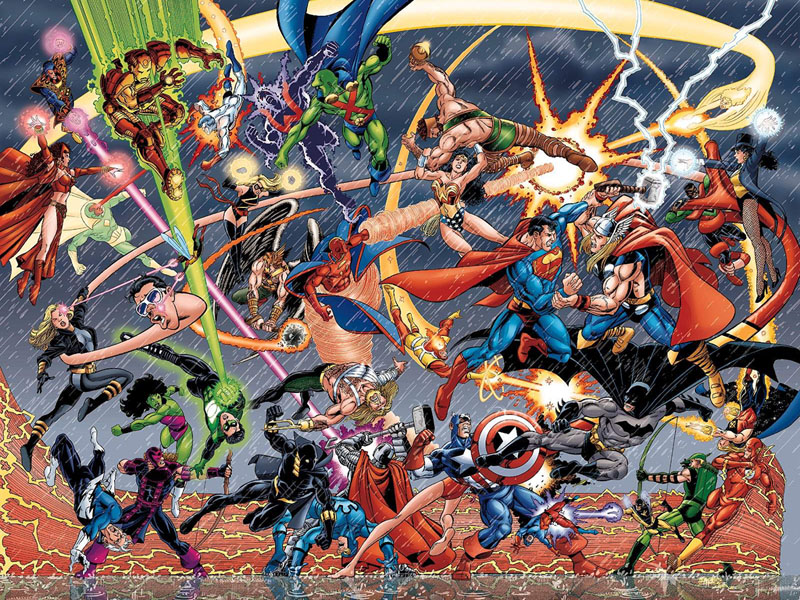
I’ve written before about how this was an exciting time for me, as I was reading comics regularly for the first time in my life, visiting The Comic Book Store owner Alex at his shop every Wednesday. I suspect that may have been why JLA/Avengers didn’t work for me the first time I read it, to the point that I don’t think I ever even finished it. As excited as I was to read a comic in which DC superheroes like Wonder Woman and The Flash would have the novel opportunity to share pages with Marvel heroes like Hawkeye and Iron Man, I remember feeling like it was written for people with far more knowledge about both universes than I had yet acquired.
What I also didn’t know was that this trade paperback I bought on a whim for just $10 was actually quite rare. A decade later, with both Marvel and DC becoming increasingly more corporatized than they already were in my late teens and early ’20s, the chances of either publisher (or, perhaps more importantly, parent company) playing nice enough to reprint JLA/Avengers are basically nil. There had been a handful of Marvel and DC crossovers since 1976’s Superman vs The Amazing Spider-Man, but short of a truly earth-shattering change in corporate structure, 2004’s JLA/Avengers will probably forever be the last official DC/Marvel crossover in comics or otherwise.
Giving that away, for free? Not one of my better decisions!
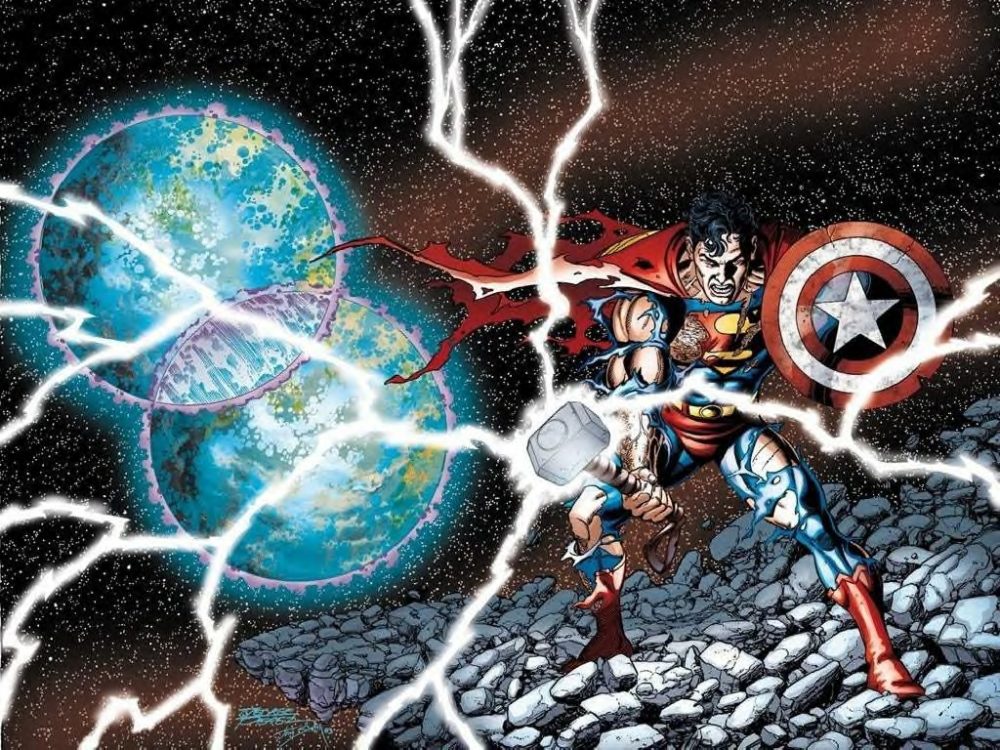
Luckily, my illustrious editor Joe Grunenwald knew this was keeping me up at night, and, after stumbling upon a used copy of JLA/Avengers, was kind enough to ask if I wanted it. I Venmoed him the (once again, weirdly inexpensive) cost of the comic and shipping, and soon enough, JLA/Avengers was in my hands once again.
While I truly was happy enough just to own this historic and rare comic again, receiving George Pérez’s sad news this week encouraged me to finally reread it. If you haven’t heard, the beloved artist, writer, and co-creator of characters like Cyborg, Starfire, and Raven announced this week that he has Stage 3 Pancreatic Cancer, with an “estimated life expectancy between 6 months to a year.”
George Perez means the world to me. He's my favorite comic artist of all time, and I'm blessed that I have been able to interact with him on two occasions. I have six Perez originals — five convention sketches, and one full-body Supergirl commission. pic.twitter.com/ueaHnFRA0Y
— Cori McCreery (@CoriMarie21) December 7, 2021
Even if you’re not familiar with Pérez you can understand how tragic this development is on a raw human level, but it’s hard to overstate how much of a heartbreaking blow it is to the comic book community. Between his extraordinary talent, and a reputation for being equally as kind, he’s one of the most universally beloved figures in comics. It’s hard to think of many others who even come close. But as of this writing, Pérez is still with us, so there’s no better time to appreciate his work than now.
So, how does JLA/Avengers hold up in a second reading? As it turns out, remarkably well.
For one thing, I had no trouble following it this time around. It’s not just that I’ve had a full decade to get a better handle on individual Marvel and DC characters and concepts. I have a better understanding of superhero fiction tropes, and more broadly, the language of comic books as a medium. JLA/Avengers is a comic for diehard fans of superhero comics, and that’s fine.
Much like Pérez’s penchant for his signature crowd scenes, Busiek – who’s written several other memorable comics for both DC and Marvel over his decades-spanning career, including an acclaimed early-’00s Avengers run with Pérez – appears eager to pack as much into JLA/Avengers as he possibly could. One gets the sense that he had a longer story in mind before being asked to compress his scripts into four oversized issues. It would have been nice to see Batman face off against The Punisher, for example, rather than for that fight to happen entirely off-panel. Busiek tends to fill his pages with a lot of words, but thanks largely to Richard Starkings’ lettering talents it rarely feels overwhelming.
For the most part, however, JLA/Avengers‘ density works in its favor. “Fan service” is sometimes seen as a dirty word, but Busiek, Perez, and company do an excellent job giving Marvel and DC fans what they want while simultaneously throwing in plenty of genuine surprises. The overall structure is familiar; universes clash thanks to multiversal mumbo jumbo, a misunderstanding causes the Justice League of America to fight the Avengers, and then they team up after realizing they have a common cause. But that’s just set dressing. The little moments in between are what make this story really special, like when a showdown between Batman and Captain America ends in a respectful draw after both combatants agree they’re equally matched.
Of course, my primary motivation for reading JLA/Avengers was George Pérez’s art, and he did not disappoint in the slightest. Tom Smith’s colors compliment Pérez’s style well, and Pérez’s absurdly thorough crowd scenes are as impressive as ever. I could have spent hours picking apart every detail. It’s hard to imagine a better artistic fit for a story like this, where readers want to see as many of their favorite Marvel and DC characters on the same page together as possible.
As an aside, it would be one thing if Pérez pulled out all the stops like this just because JLA/Avengers was a special prestige-format event, but he spent his entire career making maximalism his defining trait. I’ve always loved artists who appear to work harder than they could have gotten away with. Pérez is a bit like Jack Kirby in that way: he could have phoned it in every once in a while and still be hailed as a genius, but he gave it his all with each and every issue.
Which brings me to what I love most about JLA/Avengers: a palpable sense of joy. It’s made by creators at the top of their game who clearly could not be happier to be the ones privileged to bring two iconic universes together over the course of some 160 pages. For Pérez’s part, it’s consistent with what those who have interacted with the man in person have said about his gracious, joyful personality. In his announcement about his tragic diagnosis, Perez invoked Lou Gehrig by calling himself “the luckiest man on the face of the earth.” Reading JLA/Avengers, I could tell it’s drawn by someone overjoyed to be alive.


